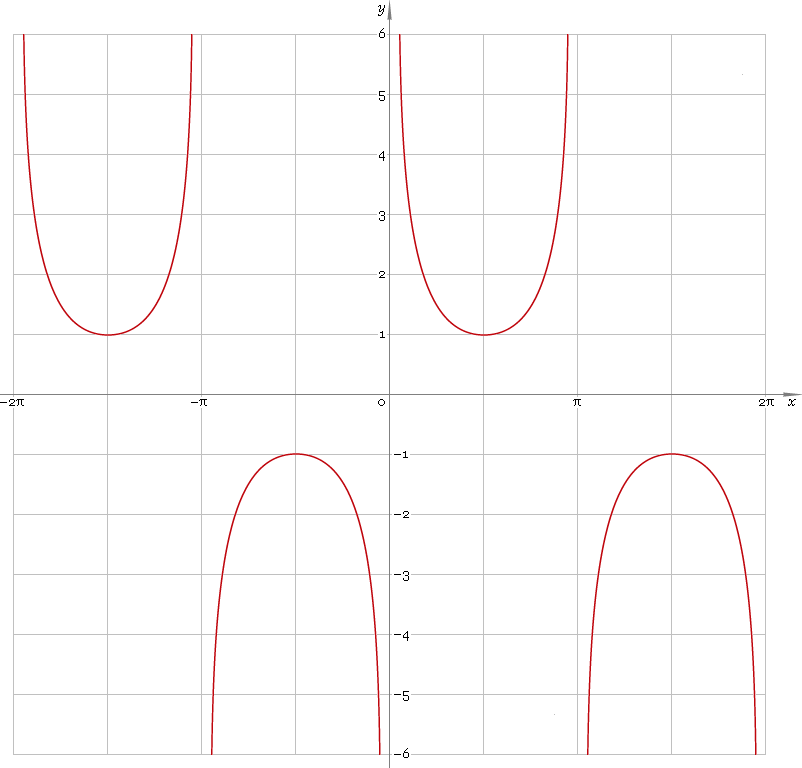| LIBROW | ® |
| Products | Solutions | Vehicles | Articles | Inquiry | Contacts | My account |
Article 11 — Appendix A.16
csc or cosec — trigonometric cosecant function
Category. Mathematics.
Abstract. Trigonometric cosecant: definition, plot, properties, identities and table of values for some angles.
Reference. This article is a part of Librow scientific formula calculator project.
Limited offer
Professional Librow Calculatorvisit
for free
- Bessel functions
- gamma function
- complex numbers
7.4 MB for Windows
1. Definition
Cosecant of the angle is ratio of the hypotenuse to the opposite leg.
2. Plot
Cosecant is 2π periodic function defined everywhere on real axis, except its singular points πn, n=0, ±1, ±2, ... — so, function domain is (πn, π(n + 1)), n∈N. Its stalactite-stalagmite plot is depicted below — fig. 1.
 Fig. 1. Plot of the cosecant function y = cscx.
Fig. 1. Plot of the cosecant function y = cscx.
Function codomain is entire real axis with gap in the middle: (−∞, −1]∪[1, +∞).
3. Identities
Base:
csc−2φ + sec−2φ = 1and its consequences:
cscφ = ±1 /√(1 − cos2φ)cscφ = ±√(1 + tan2φ) / tanφ
cscφ = ±√(1 + cot2φ)
cscφ = ±secφ /√(sec2φ − 1)
By definition:
cscφ ≡ 1 /sinφProperties — symmetry, periodicity, etc.:
csc−φ = −cscφcscφ = csc(φ + 2πn), where n = 0, ±1, ±2, ...
cscφ = csc(π − φ)
cscφ = −csc(π + φ)
cscφ = sec(π/2 − φ)
Sum of angles:
csc(φ + ψ + χ) = secφ secψ secχ / (tanφ + tanψ + tanχ − tanφ tanψ tanχ)Some angles:
| Angle φ | Value cscφ |
|---|---|
| π/12 | √6 + √2 |
| π/10 | √5 + 1 |
| π/8 | √(4 + 2√2) |
| π/6 | 2 |
| π/5 | √(50 + 10√5) /5 |
| π/4 | √2 |
| 3π/10 | √5 − 1 |
| π/3 | 2√3 /3 |
| 3π/8 | √(2 − √2) |
| 2π/5 | √(50 − 10√5) /5 |
| 5π/12 | √6 − √2 |
| π/2 | 1 |
4. Support
Trigonometric cosecant function csc or cosec of the real argument is supported by free version of the Librow calculator.
Trigonometric cosecant function csc or cosec of the complex argument is supported by professional version of the Librow calculator.
5. How to use
To calculate cosecant of the number:
csc(-1);To calculate cosecant of the current result:
csc(rslt);To calculate cosecant of the angle φ in memory:
csc(mem[φ]);
|
|||||||||||||
|
|||||||||||||

